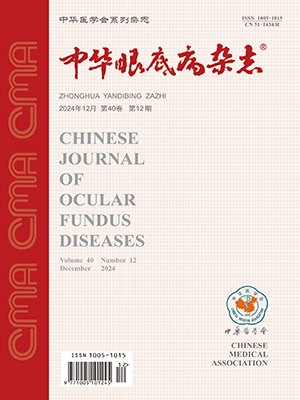Objective To observe the inhibitory effect of Bevacizumab on retinal neovascularization in oxygen-induced retinopathy in the mouse. Methods 90 one-week-old C57B L/6J mice were divided into four groups at random. 15 mice in the 1st group as normal control group, 15 mice in the 2nd group as oxygen control group, 30 mice in the 3rd group as high-dose Bevacizumab treatment group, 30 mice in the 4th group as low-dose Bevacizumab treatment group. The 2nd, 3rd and 4th groups were exposed to 75% oxygen for 5 days and then to room air. At the 12th day, One eye of each mouse of two control groups were received an intravitreal injection with Be vacizumab at 2 mu;l、1 mu;l respectively, and the same volume of BSS was injected into the other eye of the mice. The adenosine diphosphatase (ADPase) histochemical technique was used for retinal flat mount to assess the oxygen-induced change s of retinal vessels. The number of the endothelium cell nuclei of proliferative neovascularization was quantified by retinal microtome chromoscopy. Real-time PCR analysis was performed to examine the expression of VEGF mRNA. Results Comparing with oxygen control group, regular distributions, reduced density of retina l vascular and reduced endothelium cell nuclei which extending retinal membrane were observed in the treatment groups(P<0.001). But the differences between two treatment groups are not statistically significant (P>0.05). The expression of VEGF mRNA was not significantly different in oxygen control group whatever it whether accepted Bevacizumab treatment or high or low dose (P>0.05). Conclusion Intravitreal injection with Bevacizumab can effectively inhibits the retinal neova scularization in oxygen-induced retinopathy in the mouse. Intravitreal injection with Bevacizumab might become to the new method to treat retinopathy of premature. (Chin J Ocul Fundus Dis,2008,24:184-188)
Citation: Fei Feng Peiquan Zhao. The inhibitory effect of Bevacizumab on retinal neovascularization in oxygen induced retinopathy in the mouse. Chinese Journal of Ocular Fundus Diseases, 2008, 24(3): 184-188. doi: Copy
Copyright © the editorial department of Chinese Journal of Ocular Fundus Diseases of West China Medical Publisher. All rights reserved




